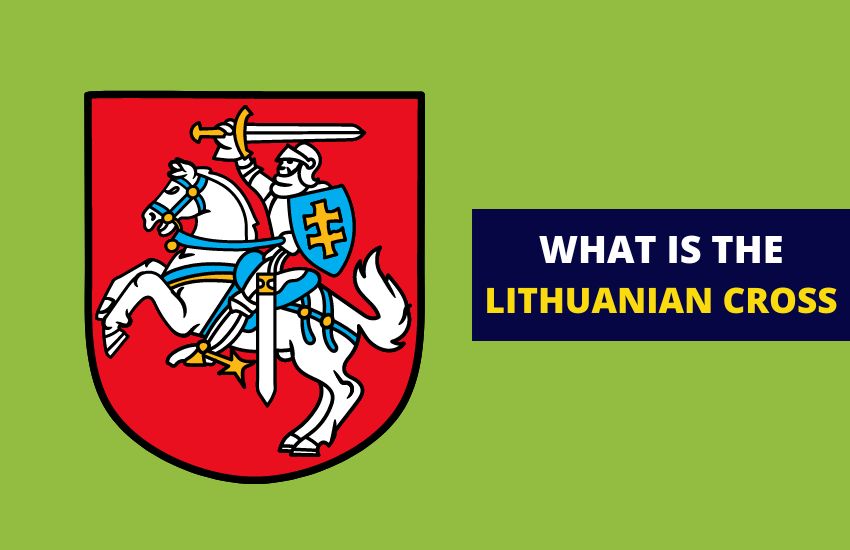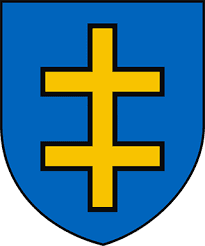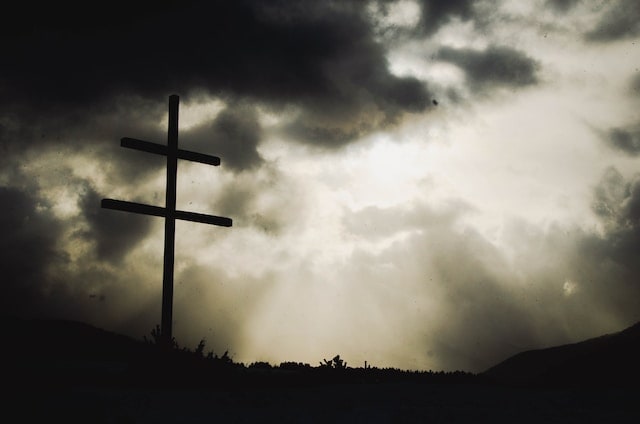
Table of Contents
The Lithuanian cross, known as the “krivis,” is more than just a symbol of faith. It’s a remarkable cultural artifact that represents the unique history and traditions of Lithuania, a country located in Northern Europe.
The cross is a striking piece of art that has been crafted by skilled artisans for centuries, and it holds a special place in the hearts of Lithuanians all around the world.
In this article, we’ll delve into the history, symbolism, and cultural significance of the Lithuanian cross, and discover why it’s such an enduring and beloved icon of Lithuanian heritage.
What is the Lithuanian Cross?

The Lithuanian cross is an iconic symbol of Lithuania, a country in Northern Europe. It is featured on the national emblem of the Republic of Lithuania, as well as on various other Lithuanian insignia.
What sets the Lithuanian cross apart from other Christian crosses is its unique design, with the second horizontal crossbeam being just as long as the one for Christ’s arms.
Origin and History of the Lithuanian Cross

The Lithuanian cross first appeared in 1386 on the royal shield-shaped seal of King Jogaila (Jagiello in Polish) in Poland. Later on, the seal was taken by the king’s brothers and successors and became the symbol of the Jagiellonian line.
The reason the cross on the seal had a second long line isn’t 100% clear, but it’s speculated that it was made this way after the king’s baptism. This hypothesis is supported by the fact that both the Patriarchal cross and the Lithuanian cross were initially designed with the lower line being longer than the one for Christ’s arms, symbolizing the water’s level.
Over time, the Lithuanian cross evolved to have a more symmetrical look, with both lines being of equal length, giving it the nickname “Double Cross.”
Symbolism and Significance of the Lithuanian Cross
The Lithuanian cross is more than just a religious symbol. It is deeply intertwined with the country’s history and culture, symbolizing Lithuania’s resilience and determination to preserve its independence and identity.
During the Soviet occupation of Lithuania, the Lithuanian cross, along with all other Lithuanian national emblems, was outlawed. However, after the country regained its independence in 1990, the Lithuanian cross once again became a symbol of national pride and identity.
In 2008, it was renamed “The Cross of Vytis” after the Order of the Cross of Vytis, a Lithuanian presidential award conferred for the heroic defense of Lithuania’s freedom.
Art and Aesthetics of the Lithuanian Cross

The Lithuanian cross is also a remarkable piece of art. It has been crafted by skilled artisans for centuries, with each cross being unique and intricate in design.
The cross is most commonly depicted in gold on a light blue shield, resembling the emblem of a medieval knight. This design was inspired by the royal shield-shaped seal of King Jogaila and has become an iconic representation of Lithuania’s cultural heritage.
FAQs about the Lithuanian Cross
The Lithuanian cross is a Christian cross with two horizontal crossbeams of equal length.
The second horizontal crossbeam of the Lithuanian cross is as long as the first, which sets it apart from other Christian crosses with extra crossbeams.
The exact meaning of the Lithuanian cross is unknown, but it is speculated to represent the water in which King Jogaila was baptized.
The Lithuanian cross is often called the “Double Cross” due to its symmetrical design with two horizontal crossbeams.
The Lithuanian cross first appeared in 1386 on the royal seal of King Jogaila of Poland.
The Cross of Lorraine is a Patriarchal cross that also has a second horizontal crossbeam, which is said to symbolize a baptism. The Lithuanian cross is similar in design to the Cross of Lorraine.
The Order of the Cross of Vytis is a Lithuanian presidential award conferred for the heroic defense of Lithuania’s freedom.
Yes, the Lithuanian cross, along with all other Lithuanian national emblems, was outlawed during the Soviet occupation of the country in the mid-to-late 20th century.
The Lithuanian cross can be seen on the national emblem of the Republic of Lithuania as well as on various other Lithuanian insignia.
The Lithuanian cross is often depicted in gold on a light blue shield, resembling the emblem of a medieval knight. This design is a nod to the cross’s appearance on the royal shield-shaped seal of King Jogaila.
Wrapping Up
The Lithuanian cross is a fascinating subject that deserves to be explored and celebrated. From its unique design to its symbolic meaning, the Lithuanian cross is a testament to Lithuania’s rich history and culture. As the country continues to evolve and thrive, the Lithuanian cross will remain a cherished symbol of national identity and pride.








